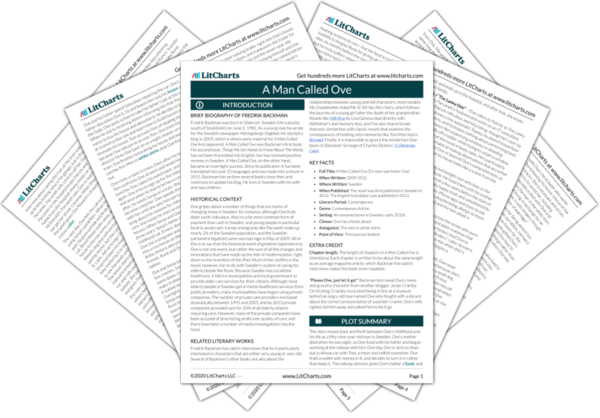The implication that Ove had nobody to fight for but Sonja, or simply didn't want to fight for anything or anyone else, is shown in the present to have disastrous consequences. While in the flashbacks where Sonja is still alive it gives Ove purpose and an outlet, in the present it leaves Ove completely lost. The bureaucracy, represented by the men in white shirts, means that Ove is never able to translate his own principles and sense of fairness into reparations for Sonja.
